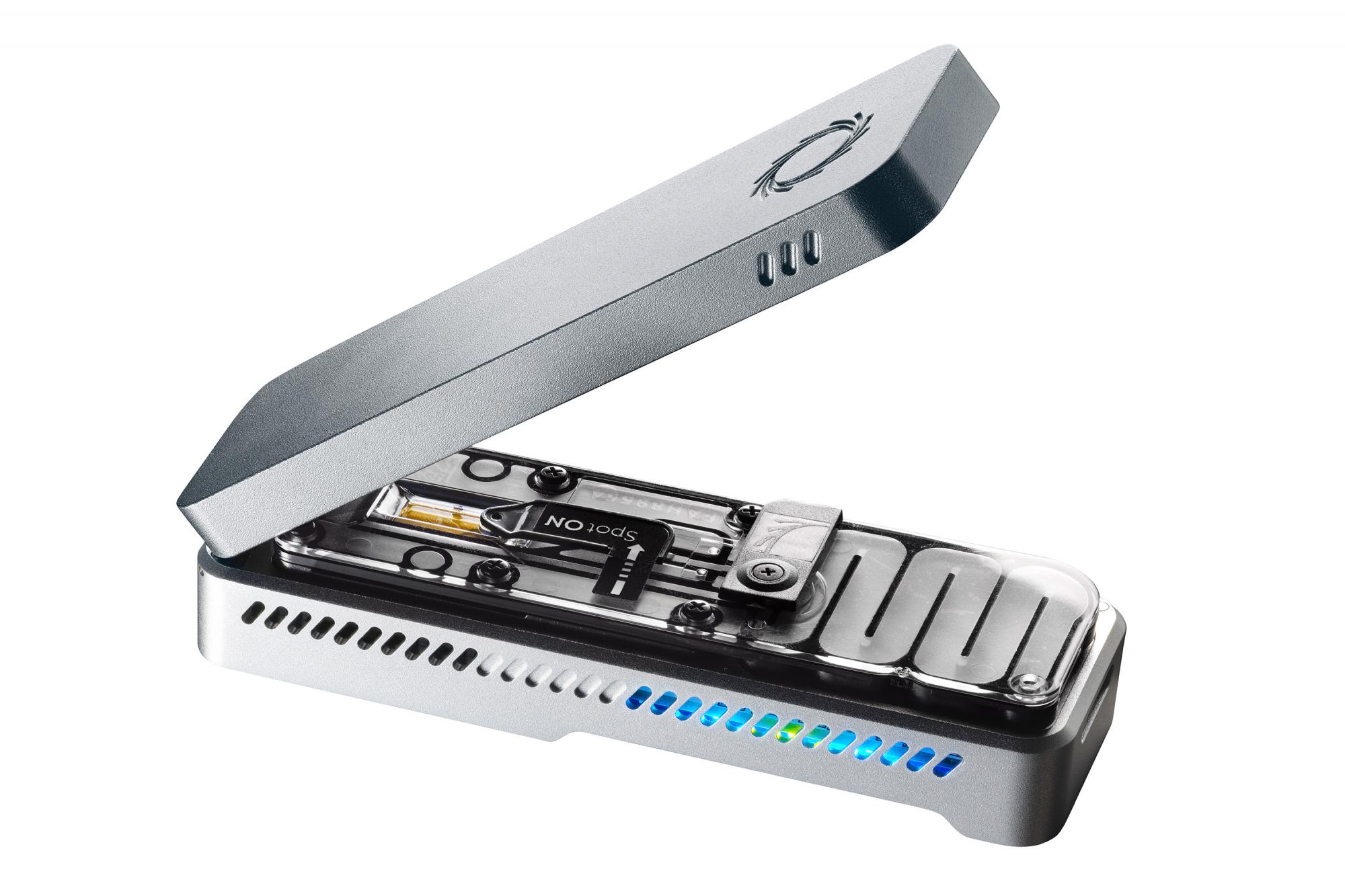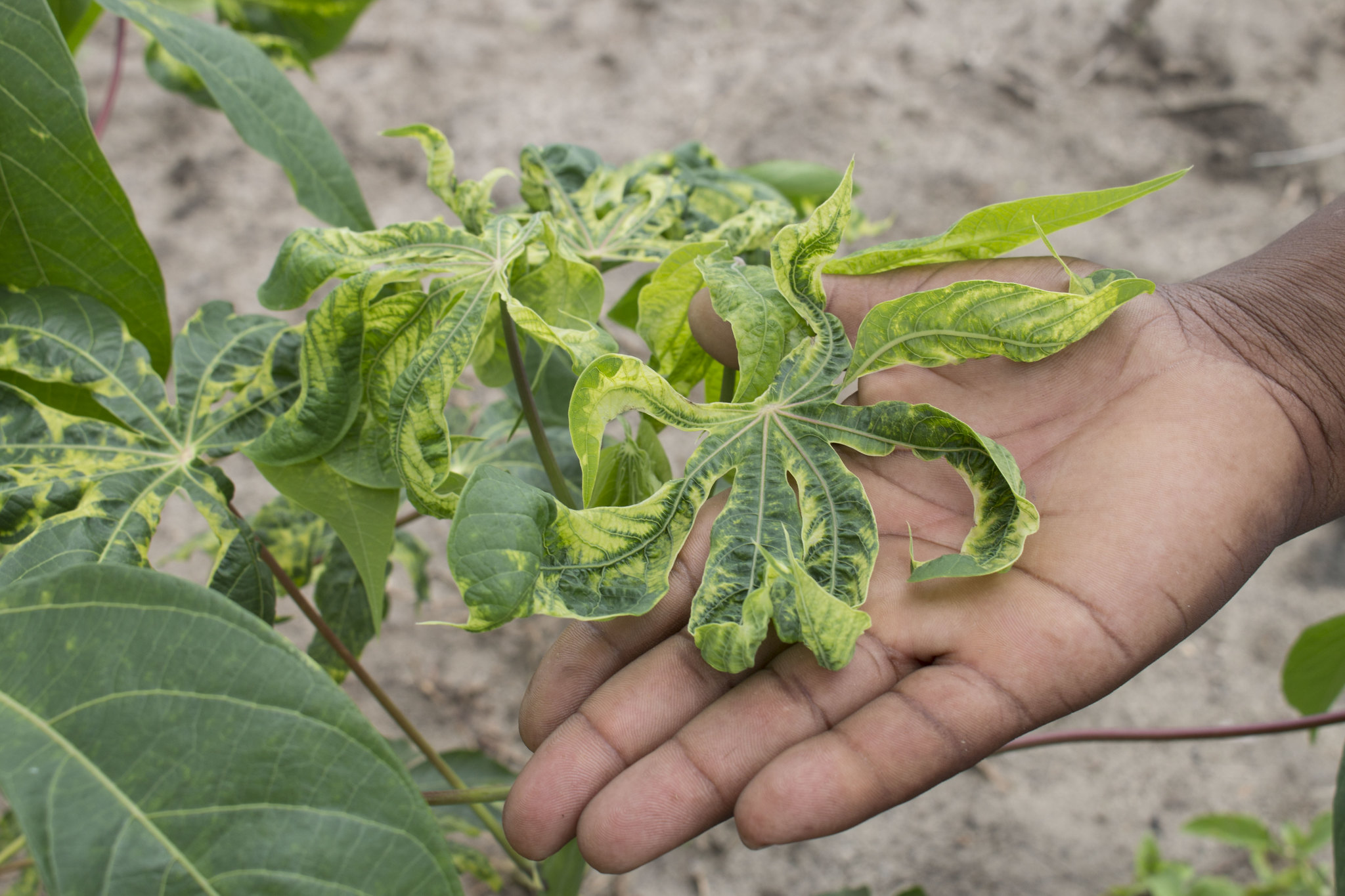Pocket-sized DNA sequencers could soon stop food-borne pathogen outbreaks as soon as they start
With new and improving technology, catching the annual romaine lettuce outbreak could get a lot easier
A few months ago, the Canadian Food Inspection Agency (CFA) recalled frozen chocolate eclairs due to a possible Salmonella infection.
That's just one. In the past year alone, there have been enough food-related outbreaks that I have now made it a regular habit to check for food recalls on the CFA website. Unfortunately, the biannual recall of romaine lettuce is the least of our worries. From leafy greens to herbal tea, food recalls due to pathogenic outbreaks are on the rise. The U.S. Center for Disease Control and Prevention (CDC) reports that 1 in 6 Americans are affected by food-borne pathogens, with roughly 3,000 people dying due to these illnesses. These statistics make food-borne pathogens a public health concern that affects everyone.
To combat this problem, scientists are now using a portable device to sequence DNA from food and detect infection-causing organisms in just a few hours. Being able to identify an infected product before it causes a pathogenic outbreak can save lives, and current research will finally allow us to do that.
The Oxford Nanopore MinION is a pocket-sized DNA sequencer – it’s smaller than a typical smartphone, and significantly faster at producing data than most sequencers currently in use. Current full-genome sequencing technologies require over 24 hours to go from DNA extraction to analysis, without including the extra time to culture and grow pathogens. Overall, it can take days. Days. That is more than enough time for infected food to travel from grocery stores to homes.
Perhaps the most exciting feature of this technology is that sequences can be analyzed in real-time, making this process even faster by reducing the data processing time typically required for sequencing data.

The MinION DNA / RNA sequencing device can help protect people from food-borne pathogens, even in places where there is no laboratory for testing samples
A joint study from the University of Massachusetts and New England Biolabs recently put the MinION to the test for detecting viable food pathogens. The researchers chose to use RNA sequencing, as opposed to DNA sequencing, to address one of the major issues with DNA-based analyses: the inability to differentiate between DNA from viable and living pathogens, versus background DNA. Since RNA is less stable than DNA and has a shorter life once cells have died, it is relatively safer to assume that any detected RNA is from living pathogens. The MinION had a turnaround time of just 6.5 hours to sequence the transcriptomes of multiple bacteria, from the first step to the final analysis. Another recent study that instead employed DNA sequencing was able to sequence the entire genome of a Salmonella strain with a total turnaround time of 10 hours, without including the 24 hours it took to grow the bacterial cultures prior to DNA extraction.
Current standard procedures for identifying outbreaks can also be a huge financial barrier. Isolating, culturing (for identification, older techniques often need to create more pathogen than a sample provides), and sequencing microorganisms requires expensive laboratory equipment and facilities. Unfortunately, these facilities might not be accessible in places where outbreaks can cause the most damage. Even the size of most sequencers can be a barrier to fast detection – most instruments cannot be picked up and carried from site to site, making them very impractical for the food industry, particularly in situations where something needs to be analyzed on-site.
Another research group, known as the Tree Lab, has been conducting a study in East Africa to see if the MinION's success could be replicated in the field. The lack of access to equipment can require agricultural scientists to transport samples to third-party services, which are often in different countries. Delays caused by transportation, data analysis, and communication can increase the timeline of pathogen detection to a staggering six months. Such a large turnaround time hinders the quick decision-making that is required to protect crops and manage disease outbreaks. The Tree Lab aimed use a MinION to cut this timeline down to just a few hours, compared to the grueling months when relying on conventional approaches. Instead of sending samples away for analysis, the researchers wanted to carry out every step of the procedure on-site, with local scientists and farmers. This would circumvent a lot of the previous caveats, such as the exorbitant costs, the potential of sample degradation and contamination during travel, and the arduous and memory-intensive task of sharing extremely large amounts of sequencing data over the internet.

Cassava is an important food staple for 800 million people worldwide, but cassava mosaic disease can be devastating to crops
H. Holmes/RTB on Flickr
With farm conditions that included no access to laboratories, reliable electricity, or internet connection, the researchers collected samples from cassava plants. As the fourth largest source of food in the world, cassava is a staple for 800 million people in the world. Unfortunately, pathogens such as the cassava mosaic begomoviruses can cause devastating damage to crop yields.
In their Cassava Virus Action Project, members of the Tree Lab were able to sequence and detect the cassava mosaic begomovirus in under four hours. In addition to the speed of the portable DNA sequences, this was made possible by a rapid DNA extraction technique, which further cut down the time it would typically require to culture and grow pathogens before extracting DNA. Pre-installed and pre-curated databases also circumvented the need for high-powered computers for data analysis.
While these results are promising, there are a few things to consider before portable DNA sequencers can become standard procedure for pathogen surveillance.
First, the Tree Lab conducted an excellent proof-of-concept experiment to show that portable DNA sequencers can be used in the field, where laboratory equipment and scientific experts are not readily available. However, transitioning out of current procedures and using portable DNA sequencers in practice will take time and additional investments. Secondly, while Nanopore sequencing is incredibly fast, one major trade-off is the reduced sequencing quality, which can affect the ability of bioinformatics tools to detect the source of the DNA sequences. Lastly, phasing out current technologies and introducing pocket sequencers will require large amounts of training, changes in current rapid-response procedures, and advances in other bioinformatics tools to aid in accurate detection and analysis of pathogens.
Currently, most food-borne pathogens are only detected after people get ill. Surveillance patterns of these cases are then used to find the source of the outbreak and identify the contaminated food. This outbreak is controlled by removing the contaminated food from shelves and homes. While scientist are making strides in streamlining pathogen detection, we have a long way to go. Until then, it doesn’t hurt to periodically check for food recalls on your local government websites.






Thank you for your article Bhavya! I was amazed at how this type of test can already be done in such a miniature device! I hope this asset gets to be developed and implemented so that there is an earlier management of outbreaks. I believe it would have great outcomes for human health, as well as food waste management.
While learning about the technology, some questions came up to me. Do they mention which are the estimated values of sensitivity and specificity for the test? For example, I am guessing when producers get a positive result of contamination it will be of their interest to confirm this result in an actual laboratory so that their products are not put to waste unnecessarily. If the false positives percentage is high, it would ultimately have a high cost to the producers. Since I also assume that the producers will have to buy consumables from time to time, I was wondering if in the end it is be cost-effective and the producers will want to implement this (of course I am wishing so!).
I was also asking about sensitivity because, since this is sequencing-based, I wonder if it could miss contaminants at early time points (when the RNA amount is not enough for detection) and then the contaminant load could still increase until the product gets to the customer?